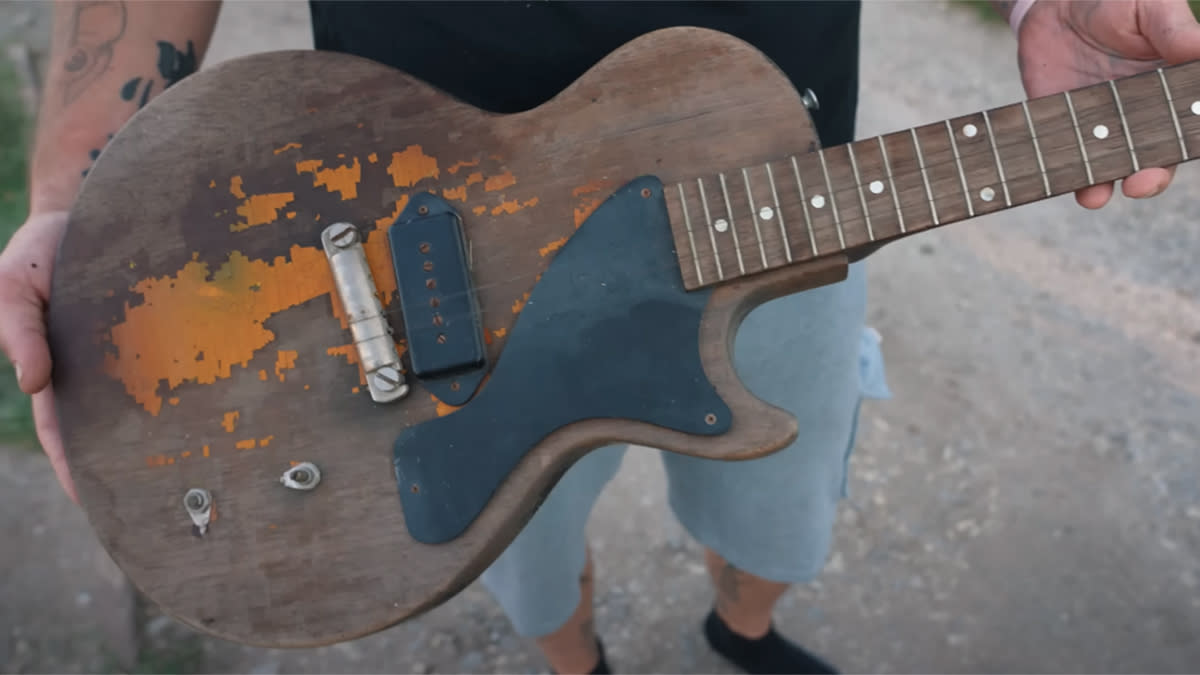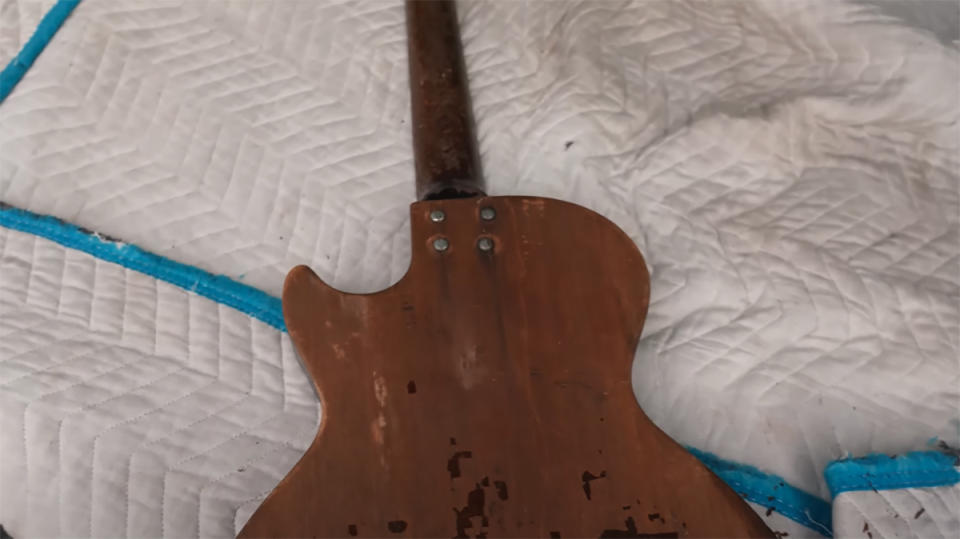“The worst condition I’ve ever seen”: A lost Gibson Les Paul Junior from the 1950s has been found in a near-unsalvageable state – and it could be a first-year model

A lost Gibson Les Paul Junior that is speculated to be a first-year model from 1954 has been discovered – and it might require one of the most extensive guitar restoration efforts in recent memory.
The electric guitar itself was scouted by guitarist and YouTuber Matthew Scott, who traveled to Wichita in order to size up the single-cut, which – in the words of its proud new owner – was in “the worst condition I’ve ever seen”.
Scott’s sentiments are likely to be shared by many guitar fans: the LP Jr. is borderline unsalvageable, with its original sunburst finish all but destroyed through decades of harsh exposure and neglect.
But such wear isn’t just limited to the body. The neck and headstock have had their own coats of paint all but removed by the elements, with the Gibson Les Paul decal just about legible from the flecks of finish that are clinging on for dear life.
While the scorched body will be enough to make guitar fans shudder, it gets worse: the original nut has been replaced with, erm, an aluminum foil alternative, the controls have been snapped off, and the buttons on the tuning machines have all rotted off.
The worst part, though? The neck heel. For some reason, at some point during the Les Paul Jr.'s lifetime, one of its owners decided to fix a joint problem by crudely drilling four bolts straight through the body and into the neck.
Little is revealed by way of the instrument's history, but we imagine Scott will endeavor to dive deeper into the single-cut's story as he charts the progress of his restoration journey.
Given the state of his find, Scott's new guitar was by no means a plug-in-and-play instrument, and although he manages to get some sound out of it during an initial inspection, it isn’t pleasant.
Granted, a quick tuner replacement and restring somewhat alleviated the sound problems (that pickup still sounds surprisingly warm) it became clear rather quickly that the Les Paul Jr. was in desperate need for a systematic overhaul. The action, for instance, was measuring in at almost half an inch.

But what makes this tale particularly interesting is the guitar's provenance: Scott speculates it could in fact be an early 1950s example, perhaps even a first-year model from 1954.
The signs that this could in fact be a rare vintage guitar from Gibson’s initial run of Les Paul Juniors? Well, first, the complete absence of any sign of a serial number on the back of a headstock could indicate the number itself was once stamped, rather than impressed, onto the wood.
It’s highly possible the serial number had been wiped away when the finish started flaking, and as per Know Your Vintage, the presence of a painted serial number would loosely put it in the 1954 to 1961 bracket.
From '61, the model took on double-cut and SG-inspired body shapes, before returning as a single-cut variant in 1986. By this point, numerous changes had been made to the design.
Other signs include the real pearl dot inlays, as found in ‘54 and ‘55 models, and the single line Kluson tuners.
In reality, we won’t know for sure exactly what year the model derives from until Scott does a deep dive into the guitar, and takes it apart. That’s something he fully intends to do in future episodes, so visit his YouTube channel to keep up to date with his progress.
'Lost' vintage guitars have been turning up in increasing numbers over the past few years. In 2022, a dusty old acoustic guitar unearthed in a woman's home in New Zealand turned out to be an 1870s Martin, which was bought by an ex Fender CEO.
More recently, an unnamed resident in the UK found an old 1960 Gibson Les Paul Standard that was sold to Joe Bonamassa, and a historic P-Bass, touted as one of the first to be imported to the UK, was discovered and sold at auction.
This particular model also joins a very specific school of 'barnfound guitar restoration projects', which includes a Squier Strat that had been left zip-tied to a fence for five years before being revived through a crazy guitar mod.

